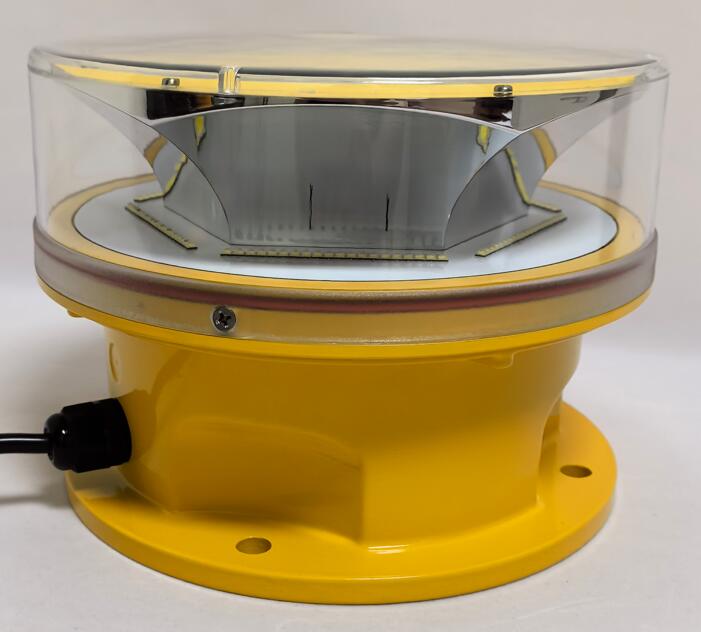Aviation Warning Systems: The Silent Guardians of Flight Safety
In the complex ecosystem of modern aviation, aviation warning systems serve as critical safeguards against potential disasters. These sophisticated technologies work tirelessly to alert pilots, air traffic controllers, and ground personnel about potential hazards, ensuring safe operations in increasingly crowded airspace. This article explores the various types of aviation warning mechanisms, their operational principles, and how they contribute to making air travel the safest mode of transportation.
The Critical Role of Aviation Warning Systems
Aviation warning systems fulfill three primary safety functions:
Collision Prevention - Alerting pilots to other aircraft and obstacles

Hazard Awareness - Warning of dangerous weather or terrain
System Monitoring - Detecting aircraft equipment malfunctions
| aviation warning |
Without these vigilant electronic sentinels, the margin for human error would increase dramatically in an environment where mistakes can have catastrophic consequences.
Types of Aviation Warning Technologies
1. Airborne Collision Avoidance Systems (ACAS)
TCAS (Traffic Alert and Collision Avoidance System)
Uses transponder signals to detect nearby aircraft
Provides resolution advisories for vertical avoidance maneuvers
| aviation warning system |
Mandatory on all commercial aircraft carrying more than 30 passengers
FLARM (Flight Alarm)
Popular in general aviation
Lightweight system for gliders and small aircraft
Predicts collision courses 30-60 seconds in advance
2. Terrain Awareness and Warning Systems (TAWS)
GPWS (Ground Proximity Warning System)
Monitors aircraft position relative to terrain
Provides "Pull Up" warnings for imminent ground impact
Reduced controlled flight into terrain accidents by 75%
Enhanced GPWS
Incorporates GPS and terrain databases
Provides earlier warnings with visual displays
Required on all turbine-powered aircraft
3. Weather Warning Systems
Radar-based Predictive Wind Shear Detection
Identifies dangerous microbursts and wind shear
Provides both visual and aural warnings
Has significantly reduced weather-related accidents
Lightning Detection Systems
Maps electrical storm activity
Helps pilots navigate around severe weather cells
Integrated with cockpit weather displays
Ground-Based Warning Infrastructure
1. Airport Surface Detection Equipment
ASDE-X (Airport Surface Detection Equipment)
Radar-based tracking of all airport surface movement
Prevents runway incursions and collisions
Installed at major international airports
RWSL (Runway Status Lights)
Automatic red lights embedded in runways
Activates when runway is unsafe to enter or cross
Provides unambiguous stop signal to pilots
2. Obstruction Lighting Systems
ICAO-compliant Aviation Warning Lights
High-intensity LED lights on tall structures
Different flash patterns for day/night operations
Critical for wind farms and urban skyscrapers
Emerging Technologies in Aviation Warning
Space-Based ADS-B
Global aircraft tracking via satellites
Eliminates oceanic tracking blind spots
Enhances search and rescue capabilities
Artificial Intelligence Integration
Machine learning algorithms for threat prediction
Reduced false alarm rates
Adaptive warning thresholds
Augmented Reality Displays
Projects warning symbology onto cockpit windows
Improves situational awareness
Reduces pilot workload during emergencies
Drone Detection Systems
RF scanning and radar for UAV identification
Critical for airport approach zones
Integrated with existing aviation warning infrastructure
Regulatory Framework and Standards
Global standardization ensures aviation warning systems provide consistent protection:
ICAO Annexes - Establish minimum equipment requirements
FAA TSOs - Technical standards for warning system certification
EASA Regulations - Harmonized European requirements
DO-178/DO-254 - Software/hardware development standards
Regular updates to these standards address emerging threats like drone incursions and cyber vulnerabilities in aviation warning systems.
Human Factors in Warning Systems
Effective aviation warning design considers:
Alarm Salience - Ensuring warnings are noticeable but not startling
False Alarm Management - Maintaining crew trust in the system
Information Hierarchy - Prioritizing critical alerts
Crew Resource Management - Standardized response protocols
The transition from auditory warnings to multi-modal alerts (visual, tactile, and auditory) represents a major advancement in human-machine interface design.
Future Challenges and Developments
The aviation warning landscape faces several evolving challenges:
Urban Air Mobility Integration - Managing eVTOL traffic in dense environments
Cybersecurity Threats - Protecting warning systems from hacking
Autonomous Aircraft - Developing AI-based threat assessment
Space Traffic Coordination - Expanding warnings to suborbital flights
Ongoing research in quantum radar and cognitive alerting systems promises to revolutionize aviation warning capabilities in the coming decade.
Aviation warning systems form an invisible shield that protects every flight from takeoff to landing. As airspace becomes more congested and aircraft systems more complex, these warning technologies will continue to evolve, incorporating advanced sensors, artificial intelligence, and predictive analytics. The aviation industry's commitment to enhancing aviation warning capabilities ensures that air travel remains exceptionally safe despite increasing traffic density and operational complexity. Through continued innovation and strict regulatory oversight, these silent guardians will keep watching over our skies for generations to come.
